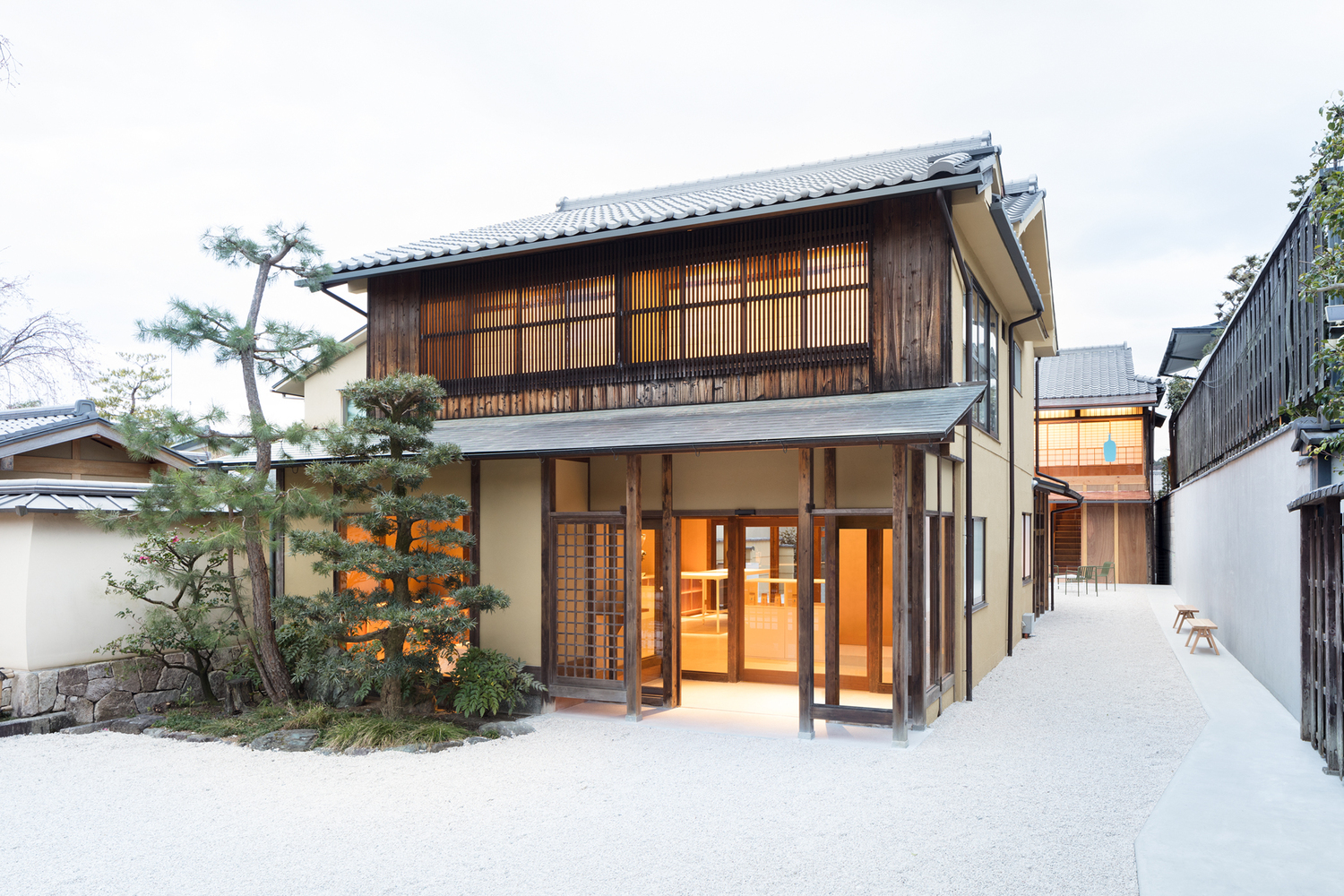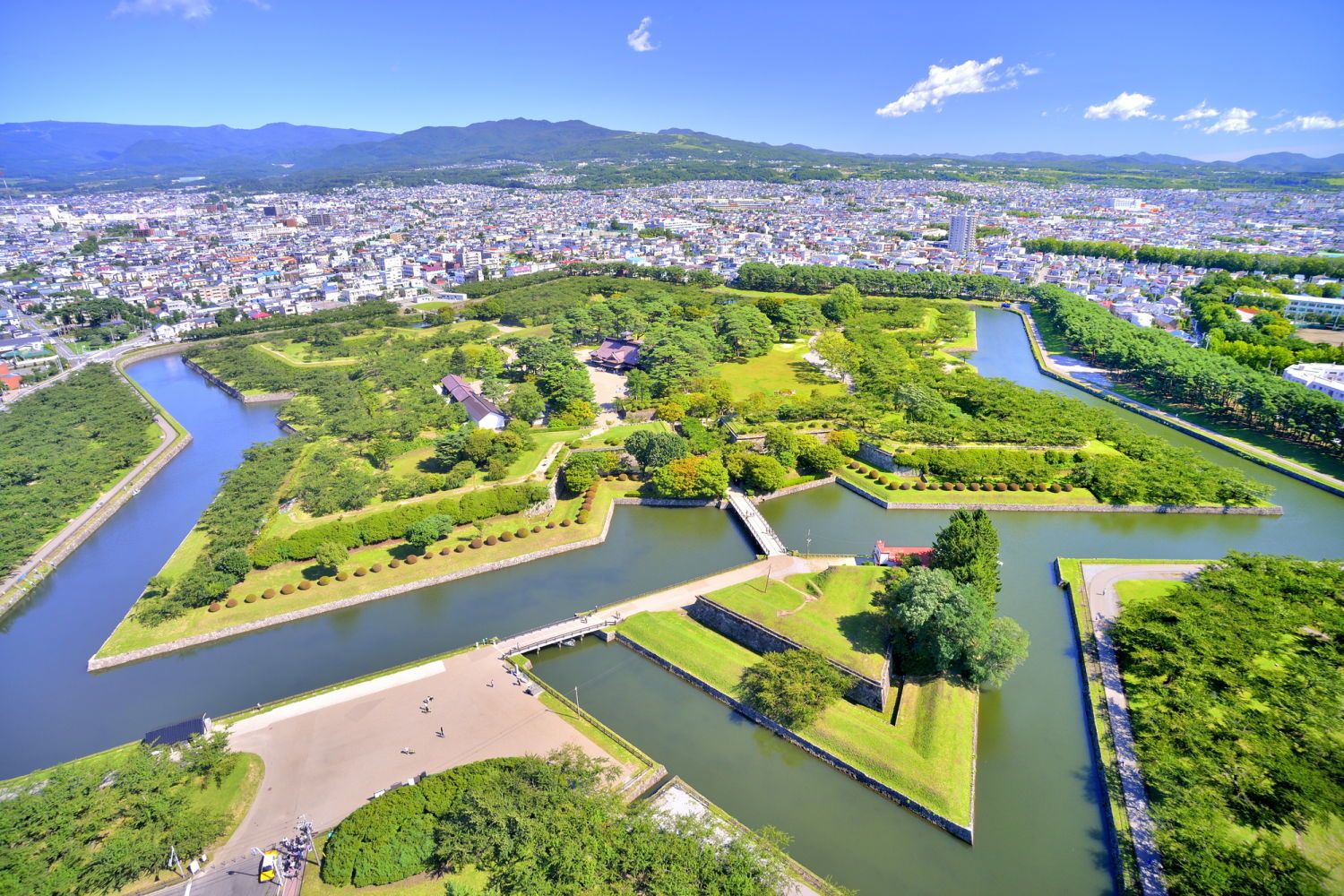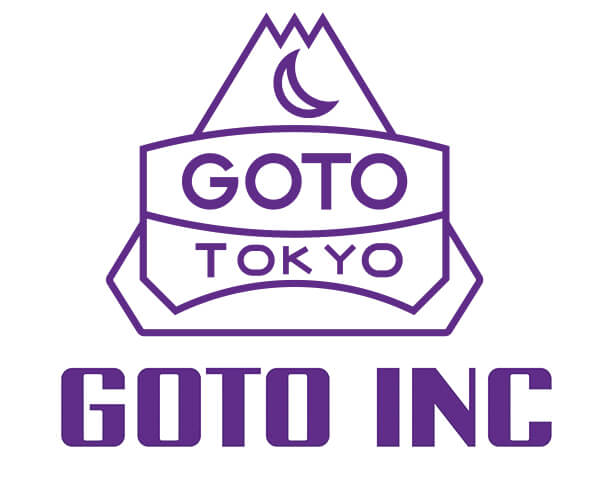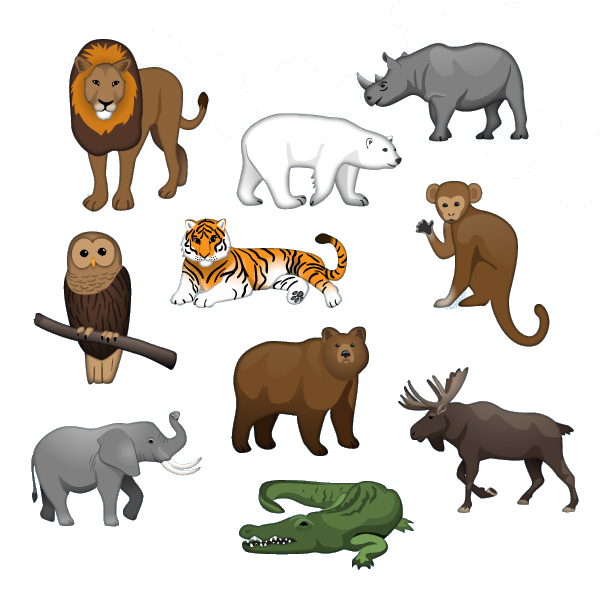
漢德百科全書 | 汉德百科全书
 Japan
Japan






Das Man’yōshū (jap. 萬葉集 bzw. 万葉集, dt. Sammlung der zehntausend Blätter) ist die erste große japanische Gedichtanthologie der Wakas. Es handelt sich um eine Sammlung von 4.496 Gedichten, die unter anderem den Kokashū und den Ruijū Karin (類聚歌林) enthält. Das Man’yōshū nimmt in der vorklassischen Literatur Japans (Nara-Periode) eine besondere Stellung ein. Es wurde um 759 und im Unterschied zu allen nachfolgenden Sammlungen der Heian-Zeit nicht auf kaiserlichen Geheiß, sondern von privater Hand, vornehmlich von dem Dichter Ōtomo no Yakamochi (大伴 家持) nach chinesischem Vorbild, kompiliert. Der von ihm mehr oder minder zufällig angelegte Umfang von 20 Bänden diente den folgenden kaiserlichen Gedichtsammlungen als Vorbild.
Die ältesten Gedichte lassen sich nach traditioneller Jahreszählung bis ins 4. Jahrhundert zurückdatieren[anm. 1], die meisten stammen jedoch aus dem Zeitraum zwischen 600 und 750.
Die Zusammenstellung ist in der Man’yōgaki, einer aus Man’yōgana (万葉仮名) bestehenden Silbenform, in der chinesische Schriftzeichen zur Darstellung der Aussprache dienen, geschrieben. Die Aufzeichnung der Gedichte erfolgte ausschließlich in Kanji, den von den Japanern übernommenen chinesischen Schriftzeichen. Diese Schriftzeichen wurden sowohl ideographisch als auch phonetisch genutzt.
Im Man’yōshū werden 561 Verfasser mit Namen genannt, darunter 70 Frauen. Darüber hinaus bleiben ein Viertel der Dichter anonym, sodass man weitere 200 Verfasser annehmen kann. Darunter waren unter anderem Ōtomo Tabito (665–731), Yamanoe Okura (660–733) und Kakinomoto no Hitomaro (柿本 人麻呂).
《万叶集》是现存最早的日语诗歌总集,收录由四世纪至八世纪4,500多首长歌、短歌,共计二十卷,按内容分为杂歌、相闻、挽歌等。
『万葉集』(まんようしゅう、萬葉集)は、7世紀後半から8世紀後半にかけて編まれた日本に現存する最古の和歌集である。天皇、貴族から下級官人、防人などさまざまな身分の人間が詠んだ歌を4500首以上も集めたもので、成立は759年(天平宝字3年)以後とみられる。
日本文学における第一級の史料であることは勿論だが、方言による歌もいくつか収録されており、さらにそのなかには詠み人の出身地も記録されていることから、方言学の資料としても非常に重要な史料である。
The Man'yōshū (万葉集, literally "Collection of Ten Thousand Leaves", but see § Name below) is the oldest existing collection of Japanese poetry, compiled sometime after AD 759 during the Nara period. The anthology is one of the most revered of Japan's poetic compilations. The compiler, or the last in a series of compilers, is today widely believed to be Ōtomo no Yakamochi, although numerous other theories have been proposed. The last datable poem in the collection is from AD 759 (No. 4516[1]). It contains many poems from much earlier, many of them anonymous or misattributed (usually to well-known poets), but the bulk of the collection represents the period between AD 600 and 759. The precise significance of the title is not known with certainty.
The collection is divided into twenty parts or books; this number was followed in most later collections. The collection contains 265 chōka (long poems), 4,207 tanka (short poems), one tan-renga (short connecting poem), one bussokusekika (a poem in the form 5-7-5-7-7-7; named for the poems inscribed on the Buddha's footprints at Yakushi-ji in Nara), four kanshi (Chinese poems), and 22 Chinese prose passages. Unlike later collections, such as the Kokin Wakashū, there is no preface.
The Man'yōshū is widely regarded as being a particularly unique Japanese work. This does not mean that the poems and passages of the collection differed starkly from the scholarly standard (in Yakamochi's time) of Chinese literature and poetics. Certainly many entries of the Man'yōshū have a continental tone, earlier poems having Confucian or Taoist themes and later poems reflecting on Buddhist teachings. Yet, the Man'yōshū is singular, even in comparison with later works, in choosing primarily Ancient Japanese themes, extolling Shintō virtues of forthrightness (真 makoto) and virility (masuraoburi). In addition, the language of many entries of the Man'yōshū exerts a powerful sentimental appeal to readers:
[T]his early collection has something of the freshness of dawn. [...] There are irregularities not tolerated later, such as hypometric lines; there are evocative place names and makurakotoba; and there are evocative exclamations such as kamo, whose appeal is genuine even if incommunicable. In other words, the collection contains the appeal of an art at its pristine source with a romantic sense of venerable age and therefore of an ideal order since lost.[2]
Le Man'yōshū (万葉集, littéralement « recueil de dix mille feuilles ») est la première anthologie de waka, poésie japonaise datée des environs de 760 contenant 4 516 poèmes (répartis en 20 volumes) du IVe au VIIIe siècle sur divers sujets tels que la nature, l'amour, les voyages, et s'alimentant des traditions légendaires nationales1.
La compilation comprend 265 chōka (長歌, poèmes longs), 4 207 tanka (短歌, poèmes courts de 31 syllabes), 62 sedōka (旋頭歌, poésie qui remonte à la tête), 1 tanrenga (短連歌, court poème de transition), 1 bussokusekika (仏足石歌, poèmes bouddhistes), 4 kanshi (漢詩, poèmes chinois) et 22 passages en prose chinoise. Les poèmes sont écrits en man'yōgana mais ont par la suite été adaptés en japonais moderne.
Son compilateur est Otomo no Yakamochi, qui était lui-même poète1 ; parmi les poètes choisis, on trouve Kakinomoto no Hitomaro, Yamanoue no Okura et Sami Mansei.
Man'yōshū (万葉集? - Raccolta di diecimila foglie) è la più antica collezione di poesie di waka in giapponese giunta fino a noi.
Fu compilata molto probabilmente intorno alla seconda metà dell'VIII secolo, durante il periodo Nara, è formato da 4496 componimenti (4172 tanka, 262 chōka (長歌?) e 62 sedōka (旋頭歌?)) scritti tra la seconda metà del V e la metà dell'VIII secolo, anche se per la maggior parte dei poemi la data di composizione si deve collocare tra la seconda metà del VII e la prima metà dell'VIII.
Le poesie possono essere classificate, per argomento, in tre grandi categorie: zōka (miscellanee) che trattano di cerimonie, viaggi, banchetti e leggende; sōmonka (poesie d'amore), dove si parla dell'amore tra uomo e donna, e, in alcune anche dei sentimenti del poeta per i figli, o per fratelli e sorelle; e banka (elegie).
I circa cinquecento autori (di cui settanta sono donne) appartengono a tutti i ceti sociali: membri della famiglia imperiale, contadini, soldati, artigiani e monaci. Gli autori più famosi del Man'yōshū sono: Kakinomoto no Hitomaro, Yamabe no Akahito, Yamanoue no Okura, Ōtomo no Tabito e Ōtomo no Yakamochi. Tra le donne troviamo: la principessa Nukata, Ōtomo no Sakanoue no Iratsume, Kasa no Iratsume.
Manyōshū (万葉集 man'yōshū?, lit. Colección de la miríada de hojas) es la colección de waka, poesía japonesa más antigua existente y de más relevancia histórica, compilada durante el período Nara, e inicios del período Heian. El compilador, o el último de una serie de ellos, se cree fue Ōtomo no Yakamochi, y el último poema registrado en la colección data del año 759. La colección contiene varios poemas de más antigüedad, siendo en su mayoría anónimos o erróneamente atribuidos a otros autores de mayor fama. Pero un gran caudal de dicho poemario representa al período entre los años 600 y 759.
La colección se divide entre veinte partes o libros, reflejando una práctica similar en otras colecciones de poemas chinos de aquellos tiempos; este número se utilizó en otras obras de similares características. Los temas del Manyoshu no están organizados por tópicos u cronológicamente. La colección contiene 265 chōka (poemas largos), 4.207 tanka (poemas cortos), un tarenga (pequeño poema de conexión), un bussokusekika (poemas que se encuentran en las plantas de los pies del Buda de Yakushi-ji en Nara), cuatro kanshi (poemas chinos), y 22 pasajes en prosa de origen chino. No posee prefacio: el formato para dicha sección en colecciones oficiales, como el de Kokin Wakashū, se desarrolló más adelante.
Es común referirse al Man'yōshū como una obra japonesa de cierta particularidad. Esto no significa que los poemas y pasajes de la colección difieran demasiado de la erudición (en los tiempos de Yakamochi) en el contexto de la literatura china y la poesía. Ciertamente, muchas secciones dentro de la obra tienen una característica propia, con algunos temas del Confucianismo y el Taoísmo, y más adelante, poemas reflejando enseñanzas Budistas. Aun así, el Man'yōshū posee una singularidad que puede ser comparada con obras posteriores en la elección de temas del Período Yamato, entremezclando la religión Shinto con las virtudes del sinceridad (真 makoto?) y la virilidad (丈夫振り masuraoburi?). También, el lenguaje utilizado en varios pasajes de esta obra evoca en dejar un poderoso sentimiento hacia sus lectores:
Esta temprana colección contiene algo de la frescura del amanecer. [...]Existen irregularidades que no serán toleradas más adelante, como las líneas hipométricas; hay nombres de lugares que evocan y [vocablos de almohada (枕詞 makurakotoba?)]; y no existen exclamaciones evocativas como kamo, lo que lo hace genuino e incluso incomunicable. En otras palabras, la colección contiene la demanda de un arte en su fuente más prístina con un sentido romántico de venerable antigüedad y por lo tanto, de un orden ideal que ha sido perdido.1
La colección es dividida, según la costumbre, en cuatro períodos. El más reciente data de un pasado prehistórico o legendario, desde los tiempos de Yūryaku (456-479) hasta aquellos pobremente documentados en el período Yōmei (585-587), Samei (594-661), y finalmente Tenji (668-671) durante la reforma Taika y los años de Fujiwara no Kamatari (614-669). Esl segundo período abarca el final del siglo VII, coincidiendo con la popularidad de Kakinomoto no Hitomaro, uno de los más grandes poetas japoneses. El tercer período data del 700-c.730 y cubre los trabajos de poetas como Yamabe no Akahito, Ōtomo no Tabito y Yamanoue no Okura, siendo Akahito japonés realmente; el resto se adapta e incorpora elementos continentales. El cuarto período se extiende en los años 730-760 e incluye trabajos de los últimos grandes poetas de esta colección junto a su compilador, Ōtomo no Yakamochi, quien no solo escribe una gran cantidad de poemas originales sino también edita, actualiza y renueva un número desconocido de poemas antiguos.
Agregado a su mérito artístico, el Man'yōshū contiene una importancia tal por el uso de uno de los sistemas más antiguos de escritura japonesa: el man'yōgana. A pesar de que no era la primera vez utilizado (ya que aparecía también en el Kojiki, del año 712), fue tal su influencia que brindó a la obra el título que lleva: "el kana de Man'yōshū". Este sistema utiliza caracteres chinos en una variedad de funciones: como su ideograma común o sentido logográfico; para representar fonéticamente sílabas japonesas; y a veces como combinación de las funciones anteriormente mencionadas. El uso de caracteres chinos para representar sílabas japonesas fue, de hecho, el origen del moderno sistema silábico de escritura kana, siendo sus formas simplificadas (hiragana) o fragmentadas (katakana) extraídas del man'yōgana.
Julius Klaproth fue el primero en publicar traducciones de poesía del Período Taika en occidente. 2 Donald Keene explica en el prefacio de la edición del Manyōshū por el Nippon Gakujutsu Shinkōkai, lo siguiente:
"Un 'enviado' (hanka) a un largo poema, fue traducido tempranamente en 1834 por el celebrado orientalista Heinrich Julius Klaproth (1783-1835). Klaproth, habiendo viajado a la Siberia en la búsqueda de lenguas extrañas, encontró algunos náufragos y pescadores japoneses, difícilmente considerados mentores ideales para el estudio de la poesía del 8.º siglo. No es sorpresivo pensar entonces, que su traducción fuese poco precisa."3
El Man'yōshū ha sido aceptado dentro de la Serie de Traducciones Japonesas de la Unesco.4
Манъёсю (яп. 万葉集 Манъё:сю:) — старейшая и наиболее почитаемая антология японской поэзии, составленная в период Нара. Другое название — «Собрание мириад листьев». Составителем антологии или, по крайней мере, автором последней серии песен считается Отомо-но Якамоти, стихи которого датируются 759 годом. «Манъёсю» также содержит стихи анонимных поэтов более ранних эпох, но большая часть сборника представляет период с 600 до 759 года.
Сборник поделён на 20 частей или книг, по примеру китайских поэтических сборников того времени. Однако в отличие от более поздних коллекций стихов, «Манъёсю» не разбита на темы, а стихи сборника не размещены в хронологическом порядке. Сборник содержит 265 тёка (長歌, «длинных песен-стихов») 4207 танка (短歌, «коротких песен-стихов»), одну танрэнга (短連歌, «короткую связующую песню-стих»), одну буссокусэкика (仏僧九石歌, стихи на отпечатке ноги Будды в храме Якуси-дзи в Нара), 4 канси (漢詩, «китайские стихи») и 22 китайских прозаических пассажа. Также, в отличие от более поздних сборников, «Манъёсю» не содержит предисловия.
«Манъёсю» является первым сборником в японском стиле. Это не означает, что песни и стихи сборника сильно отличаются от китайских аналогов, которые в то время были стандартами для поэтов и литераторов. Множество песен «Манъёсю» написаны на темы конфуцианства, даосизма, а позже даже буддизма. Тем не менее основная тематика сборника связана со страной Ямато и синтоистскими ценностями, такими как искренность (真, макото) и храбрость (丈夫振り, масураобури). Написан сборник не на классическом китайском вэньяне, а на старояпонском языке письмом манъёгана, ранней японской письменности, в которой японские слова записывались схожими по звучанию китайскими иероглифами.
Стихи «Манъёсю» обычно подразделяют на четыре периода. Сочинения первого периода датируются отрезком исторического времени от правления императора Юряку (456—479) до переворота Тайка (645). Второй период представлен творчеством Какиномото-но Хитомаро, известного поэта VII столетия. Третий период датируется 700—730 годами и включает в себя стихи таких поэтов как Ямабэ-но Акахито, Отомо-но Табито, Такахаси Мусимаро и Яманоуэ-но Окура. Последний период — это стихи поэта Отомо-но Якамоти 730—760 годов, который не только сочинил последнюю серию стихов, но также отредактировал часть древних стихов сборника.
Кроме литературных заслуг сборника, «Манъёсю» повлияла своим стилем и языком написания на формирование современных систем записи, состоящих из упрощенных форм (хирагана) и фрагментов (катакана) манъёганы.

Go (jap. 囲碁 igo, chinesisch 圍棋 / 围棋, Pinyin wéiqí ‚Umzingelungsspiel‘, kor. 바둑 baduk) ist ein strategisches Brettspiel für zwei Spieler. Das alte Spiel stammt ursprünglich aus China, hat eine besondere Prägung in Japan und Korea erhalten und fand seit dem 20. Jahrhundert auch Verbreitung außerhalb Ostasiens. Laut Angaben von Mind Sports Online lag die Zahl der Go-Spieler im Jahr 2000 weltweit bei rund 27 Millionen Menschen, wovon allein 22 Millionen in Asien lebten. Deutschland lag nach dieser Berechnung auf Platz eins der westeuropäischen Länder.[1] Die International Go Federation bezifferte 2011 die Zahl der Go-Spieler weltweit auf rund 40 Millionen.[2] Die britische Go Association gibt 2013 die Zahl der weltweiten Spieler mit 60 Millionen an.[3]
围棋是一种策略性棋类,使用格状棋盘及黑白二色棋子进行对弈。起源于中国,中国古时有“弈”、“碁”[1]、“手谈”等多种称谓,属琴棋书画四艺之一。西方称之为“Go”,是源自日语“碁”的发音。
对弈双方在棋盘网格的交叉点上交替放置黑色和白色的棋子。[2]落子完毕后,棋子不能移动。对弈过程中围地吃子,以所围“地”的大小决定胜负。
围棋规则简洁而优雅,但玩法却千变万化,欲精通其内涵需要大量的练习与钻研。国际象棋大师伊曼纽·拉斯克称赞说:“如果在宇宙中的其他地方存在智能生命形式,他们几乎肯定会下围棋。”[3]与此同时,围棋被认为是当前世界上最复杂的棋盘游戏之一,其复杂度已于1978年被Robertson与Munro证明为PSPACE-hard[4]。
截至2008年年中,全世界有超过四千万玩家,其中绝大多数在东亚。[5]截至2015年7月,国际围棋联盟共拥有75个成员国和5个协会会员。[6]
起源于中国
中国古代对围棋尚有“弈”、“碁”、“手谈”、“坐隐”、“烂柯”、“方圆”、“黑白”、“乌鹭”、“大棋”、“木野狐”等雅称,下围棋又称对弈、博弈、奕棋。弈局指棋局,弈枰、弈楸、楸枰、河洛指棋盘,奕具泛指棋盘、棋子等棋具,弈谱、弈选、吴图指棋谱;观弈指看棋;弈林指围棋圈。其中“碁”为棋之异体字,在古籍中专指围棋,如《隋书‧经籍志》所载棋谱目录,均作碁。
古代围棋并未发现完整明文的规则,但规则在逻辑关系上极其简单,《敦煌棋经》中略有所述。中国古代唐宋使用数路法,日本比目法即由此改变来。但是明朝以后,改为子空合并计算,不需保留死子,扣除眼位的过程以还棋头实现,所以近代中国的围棋规则被称为数子法。由于终局还棋头步骤的存在,可见古棋与现代规则体系下的围棋有着本质不同。[注 1] 而围棋最迟在唐朝初期传到了西藏,相传松赞干布的大臣琼波·邦色是一位围棋高手。后来围棋由藏族人改为西藏围棋。[12]
唐朝出现了棋待诏官职。著名棋手王积薪作“围棋十诀”大多在现代围棋中依旧适用。北宋沈括《梦溪笔谈》中有“四人分曹围棋”即四人围棋的记载。明朝王世贞写了一篇《弈问》[13],回答围棋的种种疑问。
清朝初年,出现了中国古代围棋发展的一个高峰期。大批著名棋手涌现,留下大量名局棋谱,如黄龙士与徐星友的“血泪篇”,施襄夏与范西屏的“当湖十局”。同时,围棋理论的研究亦达到一个高峰,代表作有徐星友的《兼山堂弈谱》和施襄夏的《弈理指归》等。但随后,中国围棋渐渐衰微,至20世纪上半叶竞技水平完全无法与日本围棋相抗,规则也根据日本围棋规则作出了本质的调整。
盛行于日本
围棋在公元7世纪传入日本[14],很快就流行于宫廷和贵族之中。战国末期,权臣丰臣秀吉设立碁所。[15]德川幕府时代,出现了在天皇或征夷大将军面前对弈的“御城棋”,日本围棋逐渐兴盛,出现了本因坊、安井、井上、林等围棋世家。其中坊门尤其人才辈出,先后出现了道策、丈和、秀和、秀策、秀甫、秀荣等杰出棋手。日本围棋由于废除了中国古代围棋的座子制(古代中国围棋是放四个座子,就是两黑两白放在对角星的位置上,双方在这个基础上开始布局),布局理论得以极大发展。
同时由于日本棋手对唐代围棋数路法的胜负判定规则(以围地多少还是活子多少为目的——或者是否以其它目的行棋,还可继续考证)产生了直观上的的误解,从而产生对唐宋数路法扣除眼位和公气、明清数子法终局还棋头(其本质是子多为胜、眼位不计的胜负计算方法)的疑惑,将其废除,从而产生了与中国古棋大为不同的地多为胜的日式围棋,并演变为现代围棋。
囲碁(いご)とは、2人で行うボードゲームの一種。交互に盤上に石を置いていき、自分の石で囲んだ領域の広さを争う。単に碁(ご)とも呼ばれる。
2人のプレイヤーが、碁石と呼ばれる白黒の石を、通常19×19の格子が描かれた碁盤と呼ばれる板へ交互に配置する。一度置かれた石は、相手の石に全周を取り囲まれない限り、取り除いたり移動することはできない。ゲームの目的は、自分の色の石によって盤面のより広い領域(地)を確保する(囲う)ことである。
アブストラクトゲーム、ボードゲームの一種で、ゲーム理論の言葉で言えば二人零和有限確定完全情報ゲームである[1]。勝敗は、より大きな地を確保することで決定される(#勝敗に関するルール)。ゲームの終了は、将棋やチェスと同じように、一方が負けを認めること(投了という)もしくは双方の「もう打つべきところがない」という合意によって行われる。他のボードゲームと比較した場合の特異な特徴は、ルール上の制約が極めて少ないこと、パスが認められていることが挙げられる。
発祥は中国と考えられ、少なくとも2000年以上前から東アジアを中心に親しまれてきた。そうした文化・歴史の中で爛柯(らんか)をはじめとしたさまざまな別称を持つ(#囲碁の別称とその意味)。日本でも平安時代から広く親しまれ、枕草子や源氏物語といった古典作品にも数多く登場する。戦国期には武将のたしなみでもあり、庶民にも広く普及した。江戸時代には家元四家を中心としたプロ組織もでき、興隆の時期を迎えた。明治以降も引き続き広く親しまれ、近年ではインターネットを経由して対戦するネット碁も盛んである。
西洋的な価値観からはチェスなどと同様マインドスポーツ(つまり競技)でもあり、国際囲碁連盟は国際オリンピック委員会が承認する国際スポーツ団体総連合に加盟し、五輪競技としての採用を目指している。中国・広州で開催される2010年アジア競技大会では競技種目として採用された。
日本では古くから親しまれ、駄目、布石、捨て石、定石など、数多くの囲碁用語は、そのまま日本語の慣用句としても定着している(#囲碁に由来する慣用表現)。
Go is an abstract strategy board game for two players, in which the aim is to surround more territory than the opponent. The game was invented in China more than 2,500 years ago and is believed to be the oldest board game continuously played to the present day.[1][2] A 2016 survey by the International Go Federation's 75 member nations found that there are over 46 million people worldwide who know how to play Go and over 20 million current players, the majority of whom live in East Asia.[3]
The playing pieces are called "stones". One player uses the white stones and the other, black. The players take turns placing the stones on the vacant intersections ("points") of a board. Once placed on the board, stones may not be moved, but stones are removed from the board if "captured". Capture happens when a stone or group of stones is surrounded by opposing stones on all orthogonally-adjacent points.[4] The game proceeds until neither player wishes to make another move. When a game concludes, the winner is determined by counting each player's surrounded territory along with captured stones and komi (points added to the score of the player with the white stones as compensation for playing second).[5] Games may also be terminated by resignation. A teacher might simplify the explanation by saying to a student "you may place your stone on any point on the board, but if I surround that stone, I will remove it."
The standard Go board has a 19×19 grid of lines, containing 361 points. Beginners often play on smaller 9×9 and 13×13 boards,[6] and archaeological evidence shows that the game was played in earlier centuries on a board with a 17×17 grid. However, boards with a 19×19 grid had become standard by the time the game had reached Korea in the 5th century CE and later Japan in the 7th century CE.[7]
Go was considered one of the four essential arts of the cultured aristocratic Chinese scholars in antiquity. The earliest written reference to the game is generally recognized as the historical annal Zuo Zhuan[8][9] (c. 4th century BC).[10]
Despite its relatively simple rules, Go is very complex. Compared to chess, Go has both a larger board with more scope for play and longer games, and, on average, many more alternatives to consider per move. The lower bound on the number of legal board positions in Go has been estimated to be 2 x 10170.[11][12]
Le go est un jeu de plateau originaire de Chine. Il oppose deux adversaires qui placent à tour de rôle des pierres, respectivement noires et blanches, sur les intersections d'un tablier quadrillé appelé goban. Le but est de contrôler le plan de jeu en y construisant des « territoires ». Les pierres encerclées deviennent des « prisonniers », le gagnant étant le joueur ayant totalisé le plus de territoires et de prisonniers.
Il s'agit du plus ancien jeu de stratégie combinatoire abstrait connu, probablement créé en Chine pendant la période des Printemps et Automnes. Malgré son ancienneté, le go continue à jouir d'une grande popularité en Chine, en Corée et au Japon. Dans le reste du monde, où sa découverte est récente, sa notoriété est croissante. Son succès tient autant à la simplicité de ses règles qu'à sa grande richesse combinatoire et sa profondeur stratégique.
Le go sous sa forme actuelle a vu le jour au XVe siècle au Japon, puis cette forme a été réintroduite en Chine et en Corée. En conséquence, la terminologie du jeu utilisée en Occident est principalement japonaise plutôt que chinoise. Le nom vient d'ailleurs du japonais igo (囲碁) ou simplement go (碁), le nom chinois étant wéiqí (围棋 / 圍棋) et le nom coréen baduk (바둑).
El go (chino simplificado: 围棋, chino tradicional: 圍棋, pinyin: wéiqí; japonés: 囲碁 igo, coreano: 바둑 baduk) es un juego de tablero de estrategia para dos personas. Se originó en China hace más de 2500 años. Fue considerado una de las cuatro artes esenciales de la antigüedad China. Los textos más antiguos que hacen referencia al go son las analectas de Confucio.
El objetivo del juego, cuya traducción aproximada es juego de rodear, es controlar una cantidad de territorio mayor a la del oponente. Para controlar un área, debe rodearse con las piedras.1 Gana el jugador que controla la mayor cantidad de territorio al finalizar la partida.
El juego consiste en colocar las piedras en las intersecciones del tablero. Antes de comenzar se asigna un color a cada jugador. Las negras inician la partida y una vez colocada una piedra, no se puede volver a mover. Se puede capturar una piedra o un conjunto de piedras y eliminarlas del tablero si están completamente rodeadas por piedras de otro color. Existen diferentes conjuntos de reglas, pero todas coinciden en los aspectos generales y las diferencias no afectan significativamente la estrategia ni el desarrollo del juego salvo en situaciones excepcionales.
A pesar de la aparente simplicidad de las reglas, requiere de una estrategia bastante compleja.
Los tableros pueden ser de 7×7, 9×9, 13×13 y 19×19. Cuantas más intersecciones, mayor la dificultad. Lo más normal es de 19×19. Se sabe que originalmente se jugaba en tableros de 17×17 pero para cuando el juego llegó a Corea y Japón en los siglos V y VII d.C., los tableros de 19×19 ya se habían vuelto la norma.2
El go es muy popular en Asia Oriental, pero también ha ganado cierta popularidad en otras partes del mundo. Llegó a Europa a través de Japón, por lo cual se conoce principalmente como go, del japonés igo. A mediados de 2008, había más de 40 millones de jugadores de go en el mundo, la gran mayoría en Asia.3 La Federación Internacional de Go cuenta con 74 países miembros.4
Го (яп. 碁; также кит. 围棋 вэйци, кор. 바둑 падук) — логическая настольная игра с глубоким стратегическим содержанием, возникшая в Древнем Китае, по разным оценкам, от 2 до 5 тысяч лет назад[1]. До XIX века культивировалась исключительно в Восточной Азии, в XX веке распространилась по всему миру. По общему числу игроков — одна из самых распространённых настольных игр в мире. Входит в число пяти базовых дисциплин Всемирных интеллектуальных игр.






 Automobile
Automobile
 ISUZU
ISUZU



 Automobile
Automobile
 *Commercial vehicles
*Commercial vehicles



 Automobile
Automobile
 *Coach and bus
*Coach and bus



 Automobile
Automobile
 Toyota
Toyota
 Japan
Japan

 Companies
Companies


 Architecture
Architecture
 Hand in Hand
Hand in Hand
 Agriculture, forestry, livestock, fishing
Agriculture, forestry, livestock, fishing
 History
History
 Literature
Literature
 Games
Games
 Sport
Sport
 Traditions
Traditions
 Fashion world
Fashion world
 Art
Art
 Animal world
Animal world
 Geography
Geography

 IT-Times
IT-Times